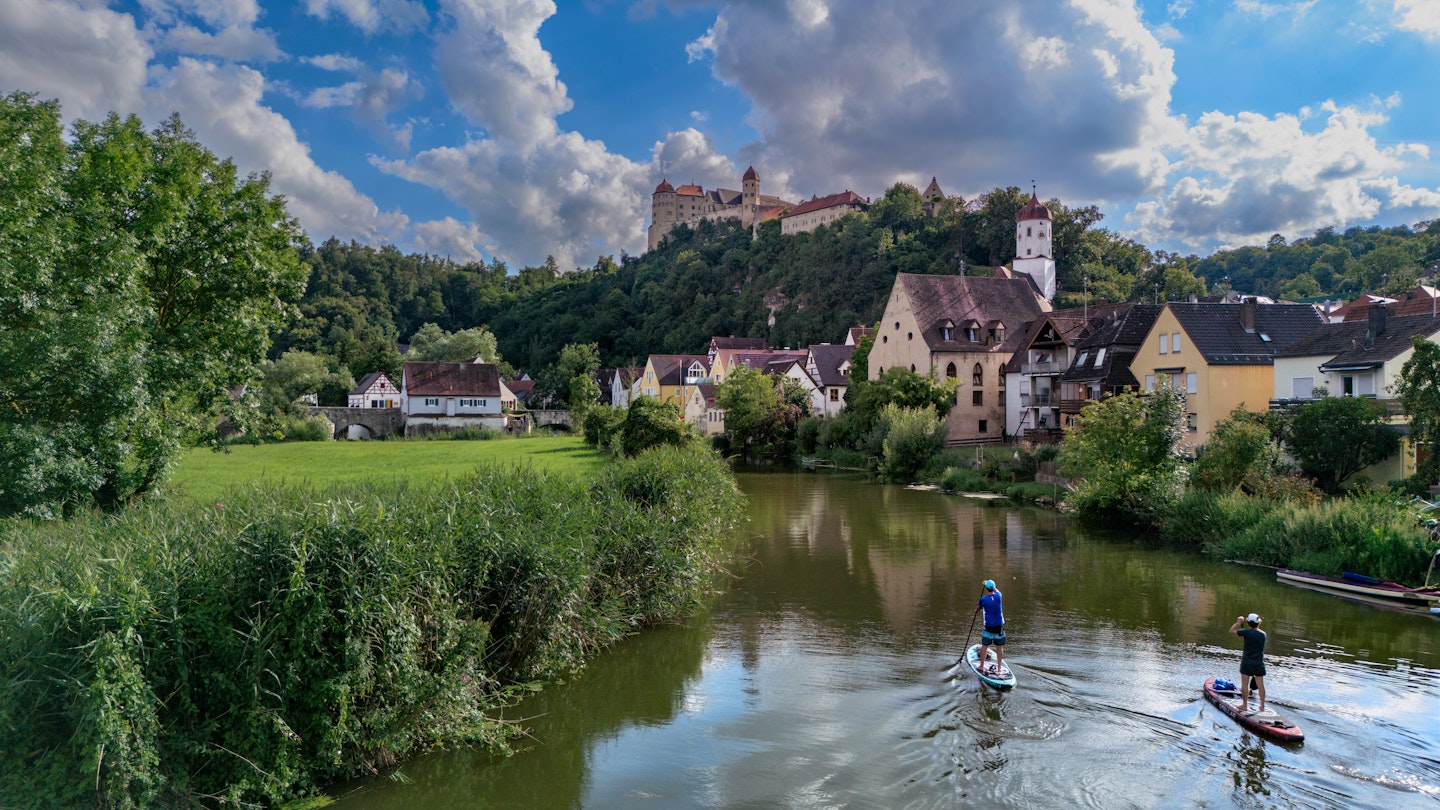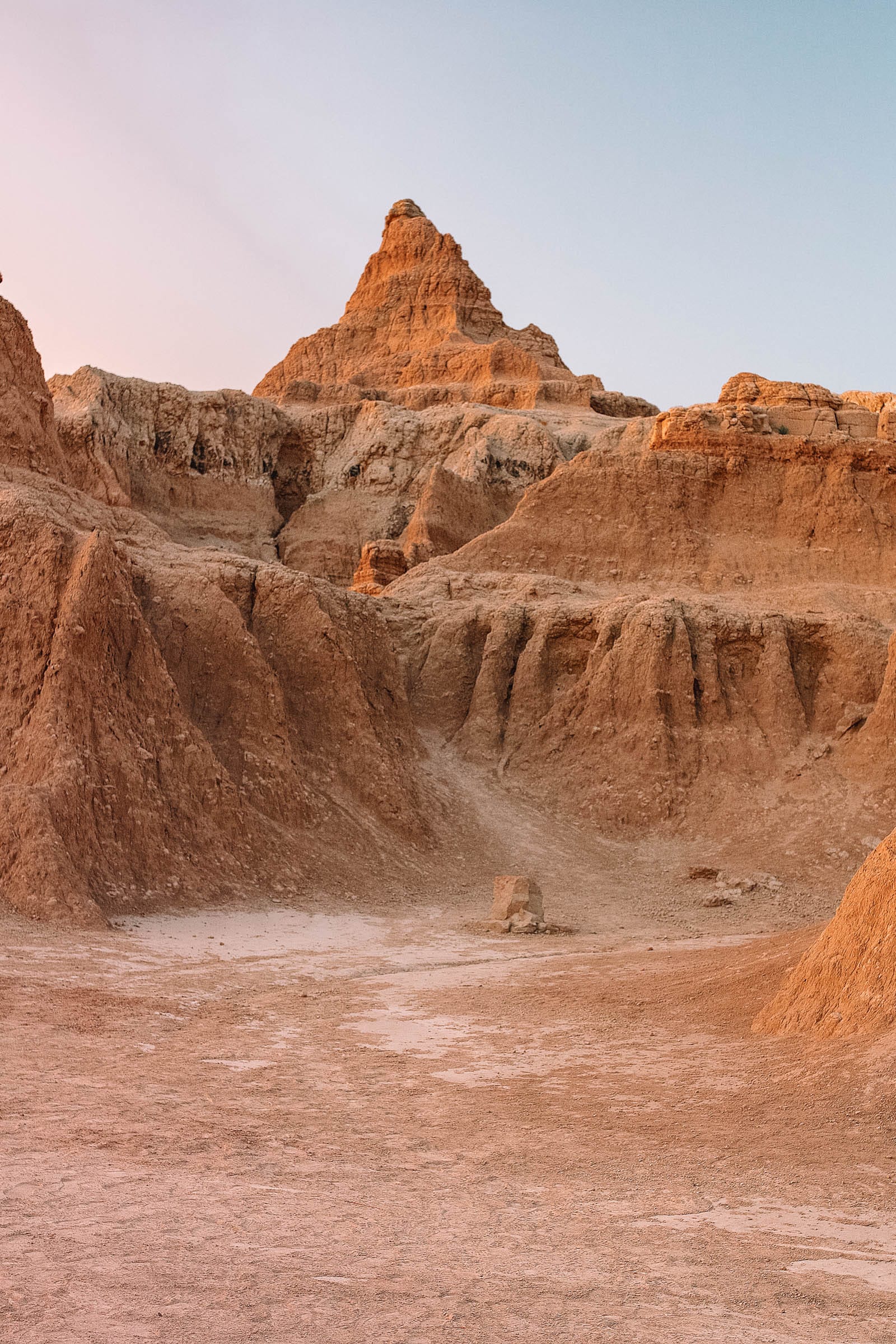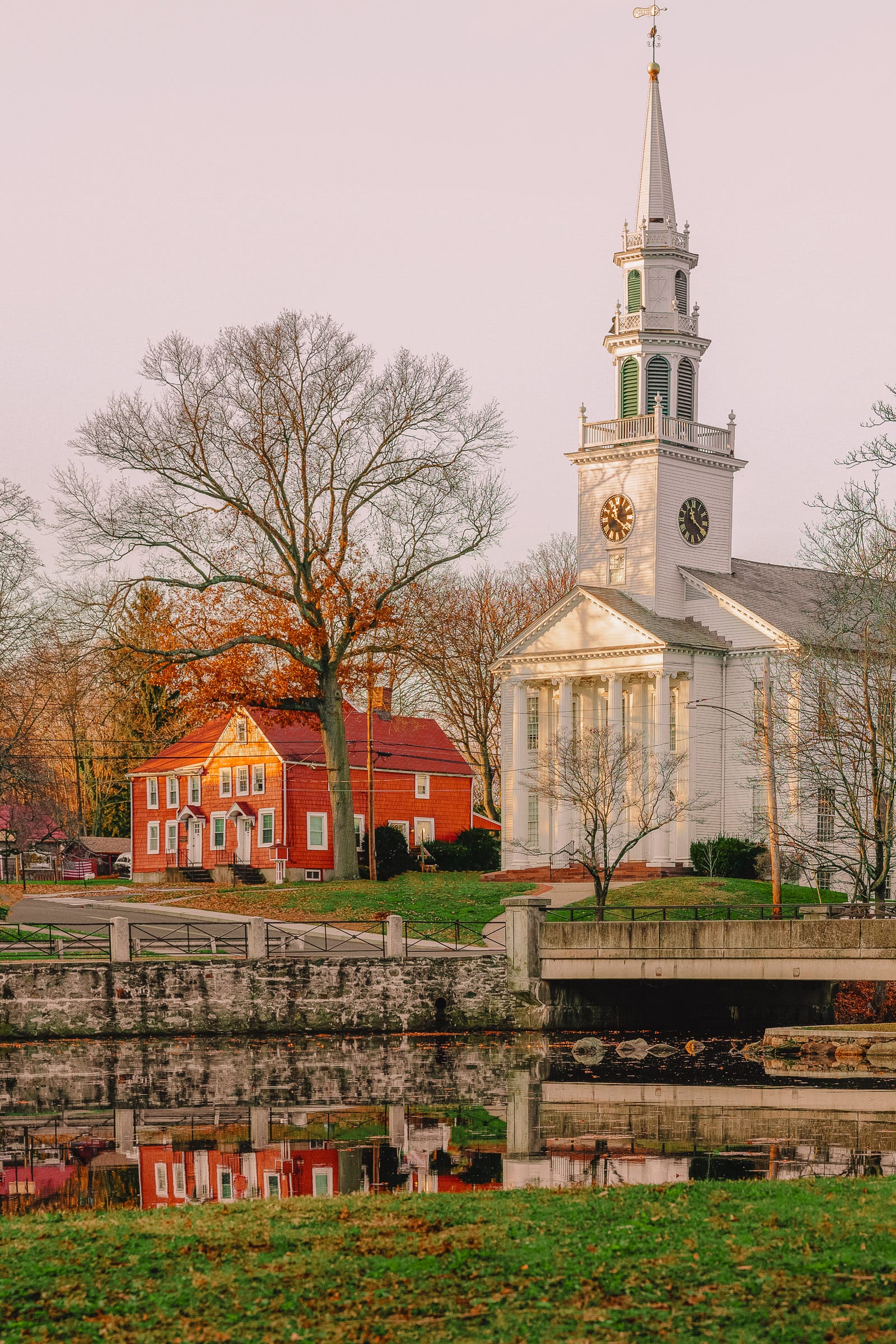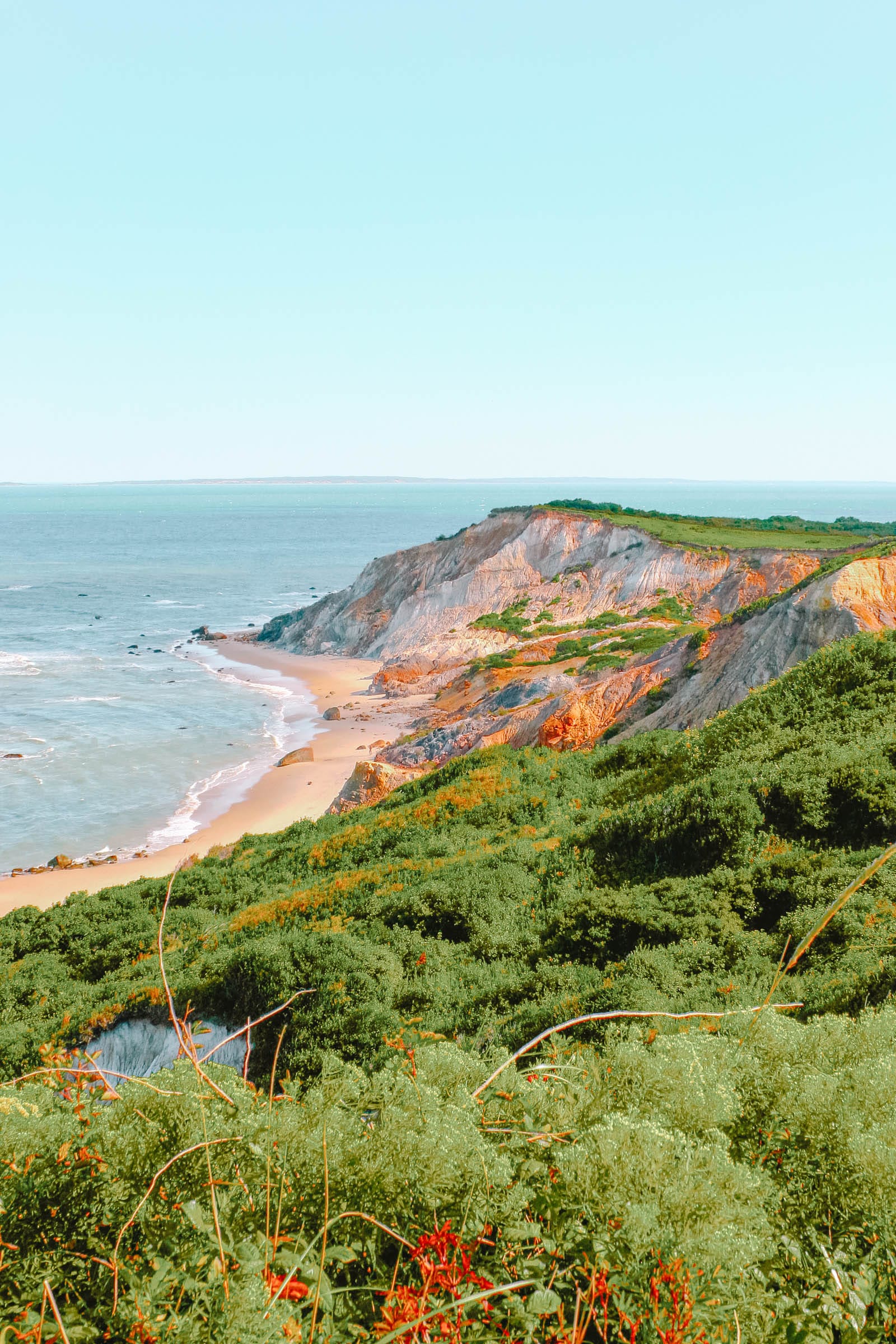Summary
Bavaria: An Exploration of Culture and Adventure

Bavaria’s magnificent landscapes, rich traditions, extensive cultural monuments, and diverse UNESCO World Heritage sites render it an essential destination in Germany. Travelers can explore renowned landmarks, stunning national parks, captivating castles, and vibrant cities, in addition to discovering tranquil lakeside retreats, ornate palaces, family-operated vineyards, lesser-known towns, and of course, ample beer.
Bavaria also serves as a paradise for adventure enthusiasts, offering turquoise lakes ideal for wild swimming and various water sports, as well as towering peaks suited for exhilarating hikes and ski excursions. Celebrating its 75th anniversary in 2025, the scenic Romantic Road (Romantische Strasse) meanders through the state, providing an excellent introduction to influential figures, locales, and eras in Bavaria’s compelling history.

Travel along the iconic Romantic Road
The upcoming year marks the 75th anniversary of the Romantic Road, a well-traveled holiday route that traverses the Bavarian countryside, connecting some of the state’s finest destinations and landmarks.
The northern terminus is Würzburg, a city renowned for its striking Baroque architecture, including the UNESCO-listed Würzburg Residenz, constructed in the 18th century to accommodate the city’s prince-bishops. Additionally, the formidable fortress, Festung Marienberg, overlooks the steep vineyards and river below. The region’s temperate climate yields delicate Silvaner white wines, celebrated for their freshness, character, and unique bottle shape – the Bocksbeutel.
For many travelers, the most enchanting stop along the route is the fairy-tale town of Rothenburg ob der Tauber. Strolling through the cobblestone streets, one encounters a series of quaint half-timbered houses and must-visit sights including the Gothic church of St Jakob. Enthusiasts of Christmas and traditional German crafts should seek out the flagship store of Käthe Wohlfahrt, which specializes in decorations, nutcrackers, and unique gifts. A Christmas Museum is also located here.

From here, the route progresses towards the picturesque town of Nördlingen, notable for its walkable medieval walls and well-preserved historical homes. Visitors can listen for the night watchman calling from the tower of St George’s Church, a tradition originating in 1440. Continuing along, one arrives in Augsburg, Bavaria’s third-largest city, housing the Augsburger Dom, the Perlachturm, an intricate array of UNESCO-listed waterways, and the world’s oldest still-operational social housing project known as the Fuggerei.

The journey concludes in the lively Füssen, a romantic town at the foot of the Alps with a longstanding history of stringed instrument making, particularly violins. Many visitors stop here to tour the most renowned castles in Bavaria, including Schloss Neuschwanstein and Schloss Hohenschwangau. In the summer months, the Forggensee reservoir attracts many for its stunning vistas of the surrounding Alps, making it a popular venue for water sports.

Explore more of Franconia
The northern region of Franconia boasts Bavaria’s vineyards and is reputed to have the highest concentration of breweries globally, with hundreds producing exceptional beers. Hiking and biking trails interconnect various producers, while nature parks, such as Franconian Switzerland, are adorned with small villages and tall rock formations, some housing historical fortresses and castles.
This region also features numerous towns and cities worth exploring, including the majestic Nuremberg, a city that underwent substantial reconstruction after the war to reflect its medieval significance. Begin at the Kaiserburg, once one of the most significant imperial palaces of the Holy Roman Empire, before delving into its various museums. Choices include the Albrecht-Dürer-Haus, residence of the renowned Renaissance painter from 1509 to 1528; the Germanisches Nationalmuseum, encompassing history from prehistory to the early 20th century; and the Deutsche Bahn Museum, highlighting the city’s role in Germany’s railways. Additionally, the Reichsparteitagsgelände provides a chilling glimpse into the megalomania of the regime, showcasing structures that continue to stand as historical markers.

Other noteworthy destinations in this region include Aschaffenburg, featuring its red sandstone castle (Schloss Johannisburg) on the river Main, and Coburg, which boasts one of Germany’s largest medieval fortresses, Veste Coburg, housing one of the country’s most significant art collections. Not far away, Schloss Ehrenburg is notable as a place of repeated long visits from Queen Victoria. A bit further south lies Bamberg, which features an UNESCO-listed old town, including the Bamberger Dom, a masterpiece of architecture, and a collection of colorful cottages by the river known as Klein Venedig (Little Venice). Additionally, the elaborately frescoed Altes Rathaus is built on an artificial island in the river Regnitz. Do not depart without tasting the local specialty, Rauchbier (smoked beer).
Lastly, Bayreuth captivates with its palaces and parks and impresses visitors with the world-class acoustics of the Festspielhaus, the principal venue of the annual Wagner Festival. While this town is popularly associated with its former resident composer, various influences have shaped its cultural and musical heritage. In the 18th century, Margravine Wilhelmine, the beloved sister of Frederick the Great, reimagined much of Bayreuth, commissioning buildings such as the Markgräfliches Opernhaus (Margravial Opera House), which was recognized on the UNESCO World Heritage list in 2012.

See the different sides of Munich
Begin your journey in Bavaria’s largest city, where the sounds of clinking glasses and brass bands fill cheerful beer gardens and cozy inns. While Lederhosen and beer halls are not exclusive to Munich, the fusion with a contemporary urban lifestyle certainly is.
Munich boasts a spirited atmosphere enriched by an international mix of residents, contributed by its vibrant student demographic and dynamic young professionals. Its thriving cultural scene encompasses traditional museums and art venues alongside innovative spaces such as the cutting-edge Kunsthalle München with its rotating exhibitions, and the Museum of Urban and Contemporary Art, featuring works from diverse street artists in Germany’s first museum dedicated to this genre. A nearby canvas under the Donnersberg Bridge showcases the creativity of sixty renowned street artists, forming one of Europe’s largest open-air graffiti galleries.

Explore neighborhoods such as Glockenbachviertel and Maxvorstadt for lively bars, trendy shops, and delightful restaurants, or visit Bahnwärter Thiel, where small enterprises operate from repurposed cargo containers. Nearby, the Alte Utting functions as a bar, nightclub, and music venue, offering great sunset views over the surrounding area while situated on an old railway bridge.
Consider unwinding at the Englischer Garten, a vast public park commissioned by Elector Karl Theodor in 1789, where joggers, cyclists, surfers, and dog walkers converge. For a refreshing beverage, the Reichenbachbrücke kiosk stays open all night long! Alternatively, for a more tranquil green space, visit Westpark, which features the outdoor café Gans am Wasser that includes a heated yurt next to a serene lake.

Discover unsung gems on the Danube
The Danube River, flowing to the Black Sea, passes through the southern region of Germany, revealing numerous charming locations, including Neu-Ulm. The laid-back town of Regensburg, capital of the Oberpfalz region, dates back to Roman antiquity and now stands as one of Germany’s best-preserved medieval cities, having largely escaped destruction during WWII. The city is crossed by a restored 12th century stone bridge, which provided the only reliable crossing for nearly 800 years.
In close proximity lies the steep-sided Danube Gorge, where boats navigate past towering limestone cliffs adorned by lush forests. A highlight of the bend encompasses the large Weltenburg Abbey, a Benedictine monastery established in 600 AD, with its brewery originating in 1050 and now equipped with modern technology to produce its celebrated dark beer.
Continuing downstream, adjacent to the Austrian border, is Passau, located on a narrow peninsula at the junction of three rivers: the Danube, the Inn, and the Ilz, historically contributing to the city’s prosperity. Following destructive fires in the 17th century, much of the city was reconstructed by Italian architects, infusing strong Baroque elements into its medieval core.
The Bavarian Glass Route, documenting the region’s 700-year history of glassmaking and the iconic Schott Zwiesel wine glass, concludes in Passau while traversing the Upper Palatinate and Bavarian Forest. This route encompasses glassblowing workshops, local artisans, galleries, and museums. In the town of Regen, visitors can marvel at a small forest of trees crafted from colored flat glass.

Drive the German Alpine Road
Skimming the southern border of Bavaria and showcasing some of the state’s magnificent landscapes, the German Alpine Road is recognized as the country’s oldest touring route. Spanning over 250 miles, it commences in Lindau on Lake Constance and concludes in Schönau am Königssee.
Notable stops along the way include Lindau, an island town with its vibrant facades, stone arcades, and a harbor guarded by a Bavarian lion statue and a white lighthouse; it opens to one of Europe’s largest lakes. The name “Lindau” translates to “island where linden trees grow,” and the town has been documented since 882.

The route further traverses through lush landscapes of Allgäu, adorned with castles, cattle, and monasteries, ultimately reaching the country’s highest mountain, the Zugspitze. Nearby, Garmisch-Partenkirchen serves as an excellent base for exploring this alpine region, having hosted the Winter Olympics in 1936 as well as the World Skiing Championships in 1978. It is also adjacent to the Partnach Gorge—a spectacular 2,300-foot-long gorge with walls soaring up to 260 feet.
Bavaria’s largest lake, Chiemsee, often called the “Bavarian Sea,” is renowned as a cherished holiday spot, lying between Munich and Salzburg, favored for water sports such as stand-up paddling, windsurfing, sailing, and kayaking. Ferries transport visitors to various islands, including Herreninsel, which is home to King Ludwig II’s Schloss Herrenchiemsee.

The final destination is one of the most remarkable areas of the Bavarian Alps, known as Berchtesgadener Land. Visitors can admire the stunning emerald-green waters of Königssee, ascend to the Eagle’s Nest, originally constructed as a private retreat for Adolf Hitler, or tour the eponymous town positioned at the base of the impressive Watzmann. At the Salzbergwerk Berchtesgaden salt mine, visitors can embark on a miner’s train over 2,000 feet into the mountain for an engaging tour complemented by 3D animations and an underground boat ride across a saline lake.
From our partners
For insights and travel features to facilitate your planning of a trip to Bavaria, explore bavaria.travel
Sponsored by Visit Bavaria
As a travel media outlet, GoTravelDaily occasionally integrates brand partners into our narratives. Such activities are clearly identified across our platforms.
This article was collaboratively produced by Visit Bavaria and GoTravelDaily, involving extensive research from both entities to create this content. We duly disclose any uncredited information.
In partnerships with brands, both GoTravelDaily and our collaborators have specific obligations:
-
Brand partner
Defines the concept, supplies briefing materials, and may present feedback.
-
GoTravelDaily
Contributes expertise, first-hand insights, and verifies facts using third-party sources as necessary.




